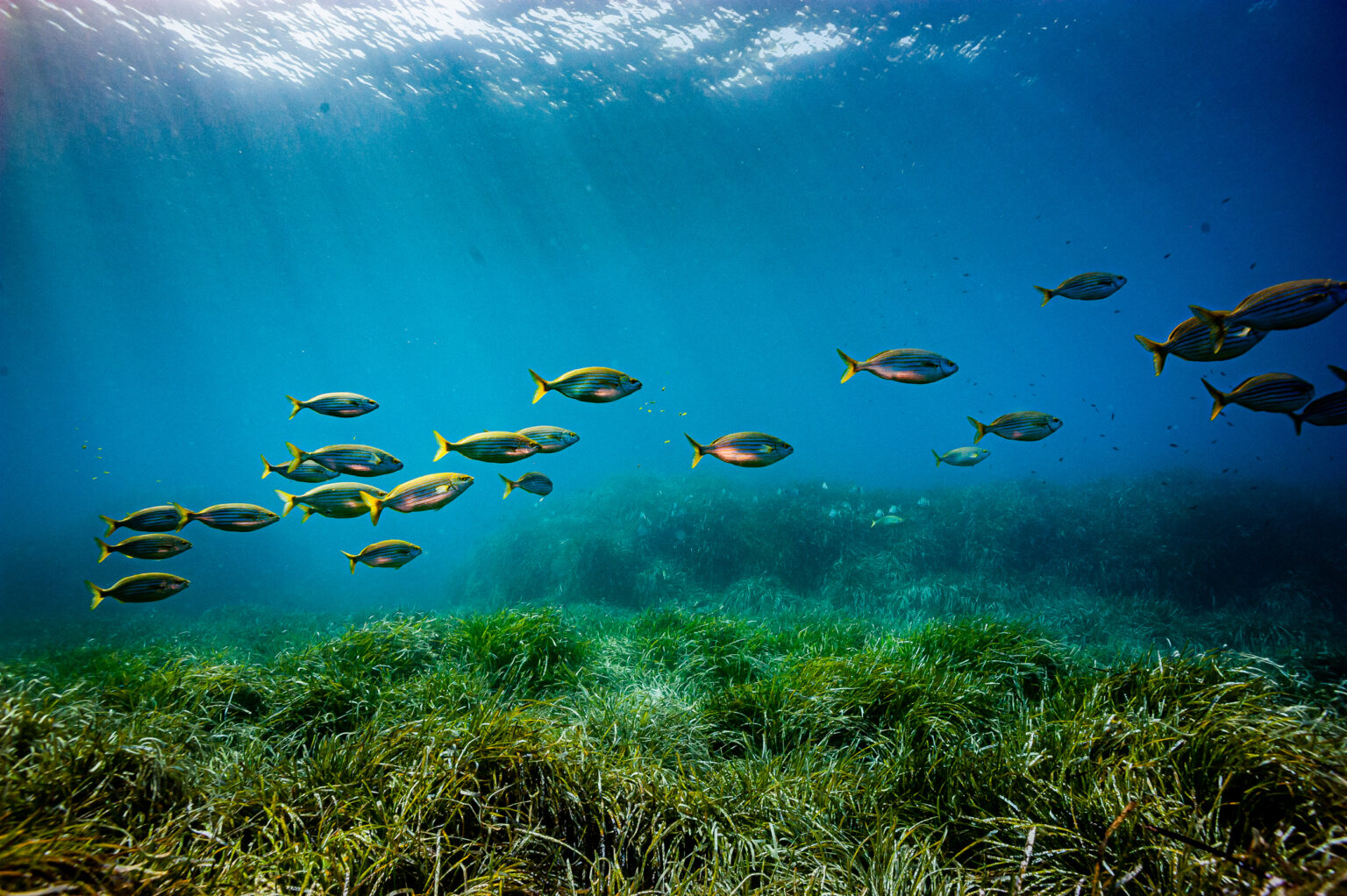A new study documents large-scale ocean system changes that threaten the stability of marine ecosystems in the sea between Europe, Africa and the Middle East.
If global warming continues at its current pace, a new study warns, tropical species could take over parts of Mediterranean marine ecosystems by the end of the century.
The research analyzed a detailed fossil record showing how tropical mollusks replaced then-existing Mediterranean populations starting about 135,000 years ago, signaling a dramatic climate-driven and systemic reorganization of biodiversity.
During that interglacial warm phase, Earth’s temperature reached the low end of the range expected by 2100 under a moderate warming scenario, said the study’s lead author, Paolo Albano, a senior scientist with the National Institute of Marine Biology, Ecology and Biotechnology in Naples, Italy.
The November 2023 United Nations Emissions Gap report said the world will warm between 2.5 degrees Celsius and 2.9 degrees Celsius above the pre-industrial average by the end of the century.
Albano said that when the researchers matched their fossil record with climate data in a model, it showed that level of warming will probably break down a barrier of cold water along the northwest coast of Africa that has blocked nearly all tropical species from reaching and entering the Mediterranean through the eight-mile wide Strait of Gibraltar.
“There is a very large upwelling system where deep, cold water emerges,” Albano said. “This hinders the arrival of purely tropical species from Western Africa. And the question was, how long can this barrier hold and what happens with increasing warming? When would this area become warm enough to allow tropical species to come into the Mediterranean?”
The fossil record shows that iconic tropical species like spiky comb shells and large conchs lived in the Mediterranean during that geologically recent warm era, similar to the current climate.
“This family of gastropods is very famous among paleontologists,” he said. “It really marks tropical conditions that were there at the time, and may come back.”
A related species from the Pacific, the Persian conch, has already spread to the eastern Mediterranean via the Suez Canal, he added.
A Conservation Opportunity?
The study is globally significant because it “illuminates the really profound impacts that human activities have, and will have, on ocean ecosystems,” said Aaron O’Dea, a scientist with the Smithsonian Tropical Research Institute, who was not involved in the study.
“This process will lead to entirely new compositions of biological communities, like never seen before,” he said. “It serves as a glimpse into the future, and in doing so, prompts us to reassess conservation strategies and what we consider natural.”
He said the findings of the new study “intriguingly” suggest that an influx of new species could enhance biodiversity and functional richness of ecosystems, but only up to a point. Unchecked warming beyond 2100 would devastate most ocean ecosystems.
But if the global temperature is stabilized per current net zero commitments, scientists, ocean stewards and resource managers should consider whether “this increase in diversity and filling of empty niches is something we could take advantage of,” he said.
“This process will lead to entirely new compositions of biological communities, like never seen before.”
In a global context, it’s important to remember that the equatorial oceans will lose species as they keep heating, he said.
“If warming continues without respite, the tropics will become depauperate,” he said. “Looking back into the fossil record when the oceans were last very warm, the tropics had lower diversity.”
A 2022 research paper documented five consecutive years of marine mass mortality events in the Mediterranean between 2015 and 2019. Its authors concluded that the sea is “experiencing an acceleration of the ecological impacts of [marine heatwaves], which poses an unprecedented threat to its ecosystems’ health and functioning.”
In 2023, another research team studied regional marine bird mass mortalities linked to ocean heat waves, noting “more frequent large-scale mortality events and the potential for a new lower carrying capacity for marine birds in the Northeast Pacific.”
fThere’s also research showing that global warming makes several types of marine animals more susceptible to spreading disease like avian influenza by crowding animals together in breeding and feeding areas, or changing migration patterns. Avian influenza was recently reported in Antarctic penguin populations for the first time, and also killed marine mammals along the Pacific Coast of South America.
Extreme growth of seaweeds and jellyfish, and mass mortalities like those from starfish wasting disease along the Pacific Coast of North America, have also been linked with global warming.
Some researchers connecting those dots worry that the current rate of warming could make the oceans as warm, acidic and oxygen-starved as during the end-Permian Extinction, 250 million years ago, when up to 90 percent of marine species died.
Some Shells Vanish in Tide of Climate Shifts
A large-scale biological shift is already under way at the far eastern end of the 2,400-mile-long Mediterranean, especially along the shallow coastal shelf near Israel, one of the marine regions that has warmed the most and the fastest.
Tropical species from the Pacific Ocean have been colonizing this part of the Mediterranean since the Suez Canal was built, swimming and hitchhiking their way along the 120-mile-long waterway.
At least 1,000 species have migrated to the Mediterranean this way, including several species of Pacific prawns that are now a valuable Egyptian fishery, but that displaced a local species that had been an important Israeli fishery. The new species also brought potentially damaging parasites with them from the Pacific.

Albano said his first research trip to the region was to study the migration through the Suez Canal.
“The first time I put my feet into the water, I realized that the Israeli Mediterranean is not Mediterranean anymore,” he said. “Not so much because of the presence of these Red Sea species, which was expected. Because there were almost no native species anymore. Wow.”
Later, he realized that this was mainly the outcome of global warming.
“The one degree of global warming that we have already secured … is enough to drive the native species to local eradication,” he said. “That increased my awareness of the problem. You know, when you touch something with your own hands, it’s different. And when it comes to the mollusks, my specialty, from limpets on the intertidal rocks to what you could find out at sea, you will really probably only find Red Sea species.”
Also striking is what has gone missing in recent decades, he added. One example is a common family of colored spiral shells that was used for thousands of years by people in the region to make purple dye.
Just to color one simple piece of fabric requires a huge amount of shells, so at one time, they were likely a predominant mollusk.
“When I was a child there, collecting there, it was so easy to find them, in shallow water on every rock one or two. It was really a common species and history tells us how important it was in the past,” he said. “And now there is nothing.”




